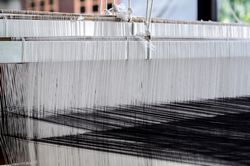The importance of textile in art and architecture
While textile fabrication is one of the oldest cultural technologies, textiles are assuming an increasingly important place in mass culture. This is evidenced by the marked public, artistic and academic interest over the last decade in textiles as medium, material, technology and metaphor in relation to the arts and art history. The project TEXTILE (An iconology of the textile in art and architecture) investigated the historical meanings and functions of the textile medium in art and architecture. Drawing on transdisciplinary expertise from contemporary art, project work also aimed to connect the two scientific cultures of universities and museums. To address this multifaceted material and the symbolical meanings of the textile medium, work focused on the time period spanning from the Middle Ages to the contemporary period. Research employed various instrumental methods, ranging from gender studies to textual analysis and from iconography to anthropological approaches. TEXTILE's targeted and interconnected subject areas shared categories of objects such as figurative tapestries, installation art, literary texts and architectural materials. Related core concepts, specific to this artistic material, included fabric, transparency, opacity, clothing, canvas, network, ornament and skin. The team delved into the universality of textile themes and techniques in paintings, sculptures, installations and videos. The range of research themes has enriched the traditional scope of study on this multifaceted medium, largely treated as a cultural phenomenon in the area of craftsmanship. As everyday objects, textiles offer themselves to an audience crossing cultures and social backgrounds. TEXTILE was thus able to share modern-day scientific and cultural concerns as well as debates with larger numbers of people interested in material culture and applied and fine arts. Project work and outcomes also reached designers and architects. The research team has written and published several monographs and dissertations as well as numerous articles. Organised conferences, workshops, expert meetings, excursions, research stays and guest presentations helped establish several networks and exchange platforms. This outcome will support efforts to strengthen scientific dialogue and social competences within the interdisciplinary research community. Overall, the project made advancements towards establishing the history of textile art as an academic discipline, and inroads taking art and architectural history towards a general history of images, media and artefacts.







